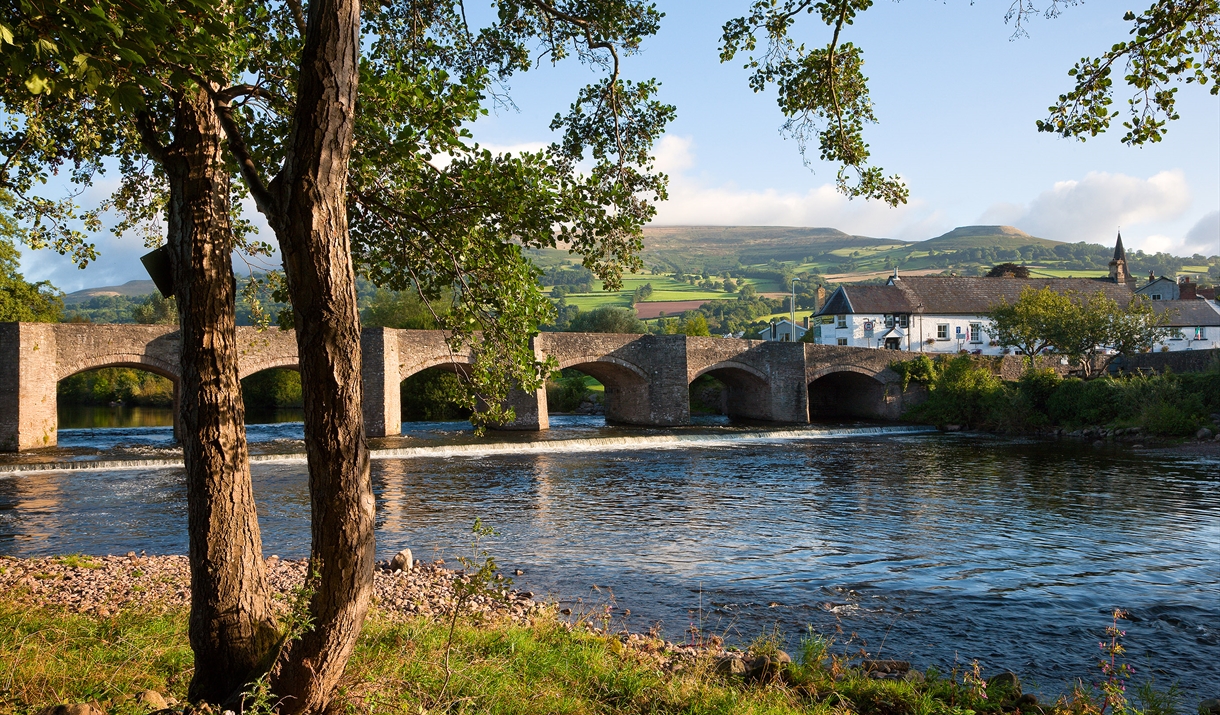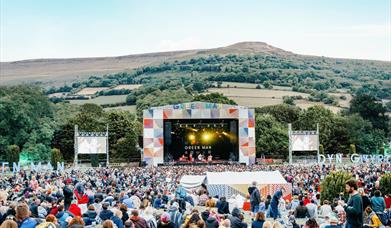
Book Tickets Online
About
You'll find the stylish town of Crickhowell on the south eastern edge of the Brecon Breacons National Park where it marks the crossing point over the River Usk. Crug Hywel - an Iron Age hillfort overlooking the town gives Crickhowell its name. Looking northwards, you'll see the Black Mountains that dominate the border between England and Wales.Like almost all of the border towns, Crickhowell grew up around a Norman castle. Originally a motte and bailey structure the Castle steadily increased in size and significance until it was sacked by Owain Glyndwr in the early 15th century. Since then it has thrived as a market town.
As well as providing the perfect location from which to explore the Brecon Beacons, Crickhowell is noted for its 17th century stone bridge that crosses the River Usk which is the longest of its type in Wales. The nearby estate of Glanusk is also home to many events including the Green Man Festival.
HISTORY & CULTURE
The initial motte and bailey castle was built in 1121 probably by the Norman marcher Lord Robert Turberville, who was at the time a tenant of the infamous Bernard de Neufmarche. The castle was later refortified in stone when an heiress of the family, Sybil Turberville married Sir Grimbold Peuncefote. Work began around 1242 to wall the castle and add substantial stone towers, a large bailey and a home within the castle walls befitting a royal ally in Wales. It later passed into the hands of the powerful Mortimer family dynasty of Marcher Lords and in the 1300's declined into a smaller estate with a large portfolio of titles, larger castles and lands attached.
In 1400, by royal command of new King Henry IV the castle was refortified, with a view to withstanding the uprising led by Owain Glyndwr. The work was carried out by Sir John Pauncefote, great grandson of a previous holder of the castle Sir Grimbold. However, the new defences did little to withstand Glyndwr's attacks, and it was largely destroyed by his forces in the early fifteenth century. Only the ruined double stone tower on the Castle Green remains.
The curious 17th century stone bridge over the Usk has odd arches (13 on one side, 12 on the other) and has a seat built into the walls. The beautiful 14th century parish church of St Edmund is also worth a visit. It continues to hold a service every Sunday.
Just to the West of Crickhowell is a fine Georgian house called Gwerndale, now a hotel. It is here that Sir George Everest was born in 1790. He was appointed Surveyor General of India in 1830, and the pioneering methods of measurement he developed were used by his successor Andrew Waugh in 1852 to calculate the height of the highest mountain in the world. In tribute to Sir George, Waugh named the peak Mount Everest.
Map & Directions
Road Directions
A465 or A40 from Abergavenny.
Accessible by Public Transport: Abergavenny station is 7 miles away.



 to add an item to your Itinerary basket.
to add an item to your Itinerary basket.





